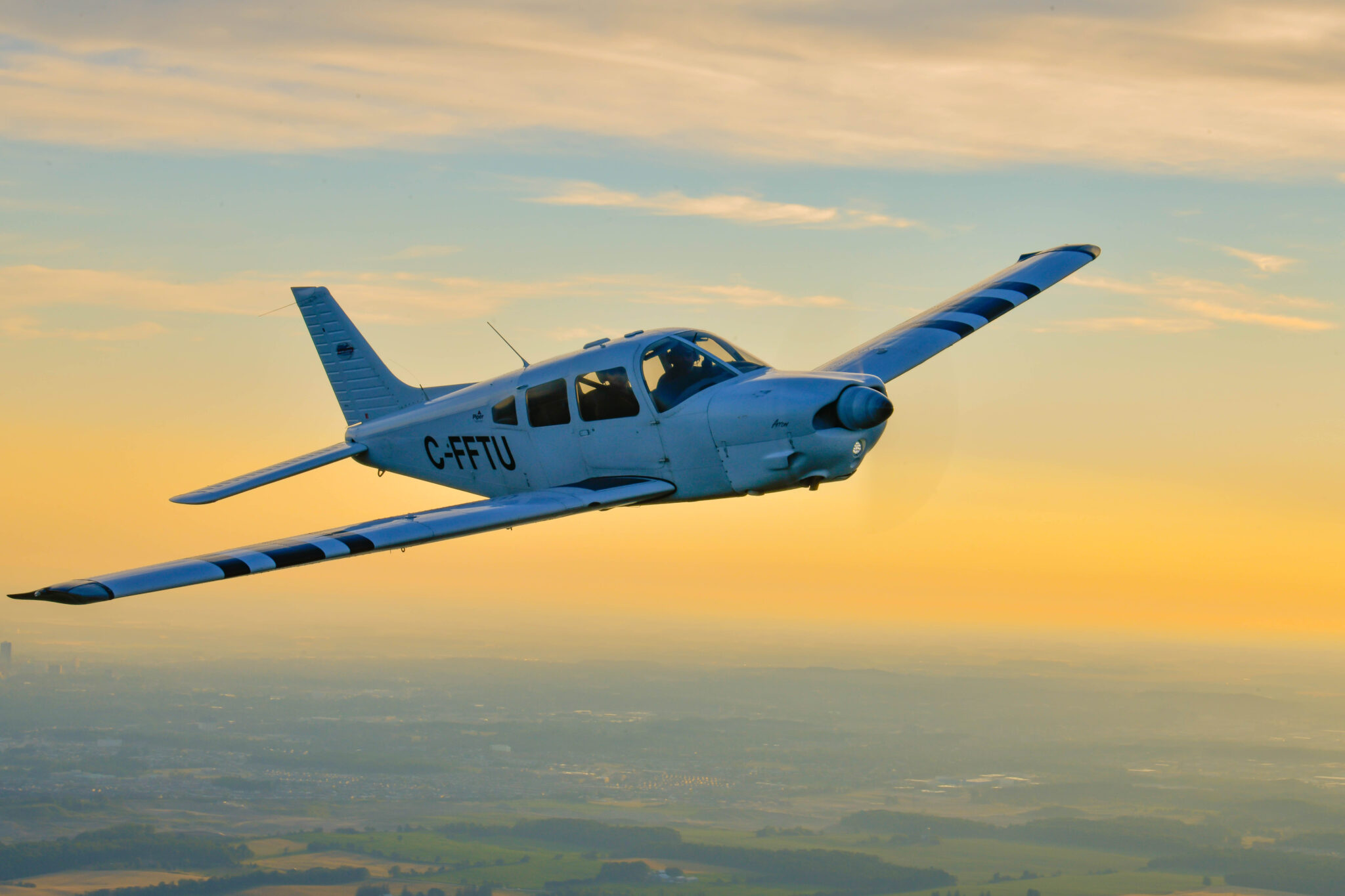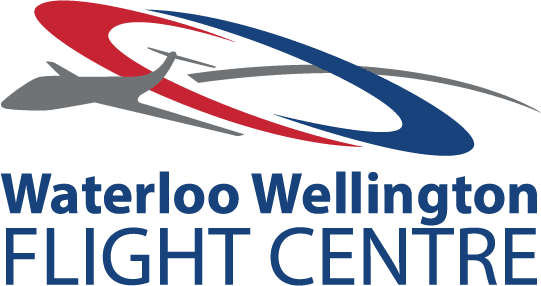ATP Program
ATP Program Overview
Your future career is here
An ATPL or Airline Transport Pilot Licence is the highest level of aircraft pilot’s licence a pilot can hold. Almost all of the world’s commercial airlines have aircraft that must be flown by a crew of two or more pilots, and they must be commanded by a pilot holding an Airline Transport Pilot Licence (i.e. the captain in an airline cockpit must have an ATPL). This licence is the end goal for practically all working pilots. In order to obtain an ATPL, a pilot must satisfy three distinct variables that differ from the requirements for the Commercial Pilot Licence (CPL). These requirements are grouped under Knowledge, Experience and Skill.
QUALIFICATIONS
- Have successfully completed high school education, meeting or exceeding Canada's academic standards for high school graduation.
- Be at least 17 years old at the start of the program and 18 by its conclusion, adhering to regulations set forth by Transport Canada and Private Career Colleges. High school graduates should have completed at least one university/college-level Grade 12 math course and one university/college-level Grade 12 physics course.
- Please be advised at this time we are not accepting International applications.

Applications are now open for our September intake!
All applicants must complete a screening interview and be formally accepted into the program by the Admission department. Please reference our Application Guide for more information on our application process.
Note: There is a $230 ATPL application and AON Testing Fee.
What is an ATPL?
An ATPL or Airline Transport Pilot Licence is the highest level of aircraft pilot’s licence a pilot can hold. Almost all of the world’s commercial airlines have aircraft that must be flown by a crew of two or more pilots, and they must be commanded by a pilot holding an Airline Transport Pilot Licence (i.e. the captain in an airline cockpit must have an ATPL). This licence is the end goal for practically all working pilots. In order to obtain an ATPL, a pilot must satisfy three distinct variables that differ from the requirements for the Commercial Pilot Licence (CPL). These requirements are grouped under Knowledge, Experience and Skill.
The full-time program is divided into 12 six-week modules, which includes:
750 classroom ground school hours
205 aircraft flying hours
50+ simulator training hours (fixed base FTD)
Professional flight instruction
Students will complete the multi-crew cooperation module, which includes the following skills:
Flight deck communication and teamwork
Monitoring and cross-checking
Threat and error management
Flight Management Systems (FMS)
Use of checklists, SOPs
Workload management
Cost & Schedule
The cost of the program is approximately $80,000-90,000 including tax. This covers tuition, compulsory fees and third party fees, such as aviation tests and exams. We offer spring and fall start dates. The end date depends on completion of flight training hours and may vary per student. (Usually 18 months)
WWFC's program is approved by Transport Canada and approved as a vocational program under the Private Career Colleges Act, 2005 (#105919).
What is the Integrated ATPL Program?
The Integrated ATPL program is to prepare students without previous flight experience for an airline career track in an accelerated manner (18 months). The program includes the ground, flight and simulator training required to obtain a Commercial Licence and Group 1 Instrument Rating, as well as satisfy the knowledge requirements for the Airline Transport Pilot Licence.
In order to obtain an ATPL, a pilot must satisfy three metrics that differ from the requirements for the Commercial Pilot Licence (CPL). These requirements are grouped under Knowledge, Experience and Skill.
Knowledge
Would-be ATPL holders must write and pass two Transport Canada written exams (70% minimum to pass). The SAMRA exam includes meteorology, radio navigation and flight planning, while the SARON exam includes law, flight operations and general navigation topics. Typically, pilots must have at least 750 hours to attempt these exams. In the Integrated ATP program, these exams are written prior to graduation.
Experience
Pilots must obtain the following experience, assuming they only fly fixed-wing:
1500 hours total flight time (≤1295 hours after graduation)
250 hours pilot-in-command flight time (≤150 PIC hours after graduation)
100 hours pilot-in-command cross-country flight time (≤25 PIC cross-country hours after graduation)
100 hours night flight time as pilot-in-command or as co-pilot (≤95 night PIC hours after graduation. Students have the option of doing more)
75 hours instrument flight time of which a maximum of 25 hours may be in flight simulators (≤20 instrument flight hours after graduation)
Skill
In the 12 months prior to applying for the ATPL, a pilot must complete a Group 1 Instrument Rating (IR) flight test. This flight test occurs towards the end of the Integrated ATP program when students initially earn their Group 1 IR, but it is not feasible to obtain the additional experience required above within 12 months. However, a Group 1 IR is only considered valid for 24 months, so repeating the flight test to regain validity is normal practice. The first or second renewal should coincide with the experience requirements above and permit a graduate to obtain their ATPL.
Program Overview
The ATPL is an 18-month program that is divided into 12 six-week modules. Each module contains distinct ground and flight training objectives organized to present material in a logical sequence and to maximize the effective use of time. Students follow the typical progression of professional flight training at WWFC:
Private Pilot Licence
Night Rating
Cross-Country Experience
Commercial Licence Flight Test
Multi-Engine Rating
Instrument Rating
Multi-Crew Cooperation
NOTE: the ATPL program does not offer an advanced program option. Applicants who have some PPL experience will not be eligible to have previous training time credited towards their ATPL program. Applicants who already hold a signed-off PPL may be eligible to have up to 30 hours credited towards their training. All training must be completed at WWFC. To determine if this program is right for you, register for an Information Session that will provide the details needed to make an informed decision.
Multi-Crew Coodination
After completing the Instrument Rating and acquiring all required flight time, students will participate in a simulator-based two-crew operations module. This module places students in the cockpit of a multi-engine, turbine powered aircraft, which they will operate as a crew through a variety of scenarios using operational techniques and procedures representative of those found at airlines.
Classroom Activities
Students will complete 750 hours of classroom and computer-based training, which is divided into two types of courses used at WWFC.
Flight Management courses focus on theory and essential background knowledge, and relate to a specific Transport Canada exams.
Flight Lab courses are the in-class portion of the Flight and Simulator Training, and focus more directly on practical skill development.
In addition to the two types of courses, subject matter is divided into levels that reflect the relationship between the skills and knowledge presented in class, and the associated licences, rating or flight training.
100 Level - Private Pilot Licence
200 Level - Commercial Pilot Licence
300 Level - Multi-Engine and Instrument Ratings
400 Level - ATPL & Airline Operations
FAQs
- I have previous training experience. Does any of that training count towards my ATP program?
- No. This is an integrated pilot training program that requires a student to start from the beginning of the PPL phase.
- What happens if I don't have my Category 1 Medical by the time the program starts?
- Applicants must start the process of obtaining a Cat 1 Medical as soon as possible. The issuance of Medical certificates varies and can take upward a year for processing. If you don't have your Medical by the time your program starts, you can still continue up until your first solo flight.
- Can I work while I am doing my flight training?
- This program is highly structured and demanding. It is not ideal for anyone who needs to work more than 20 hours per week.
- If I apply to the program, does it mean I'm automatically enrolled?
- No. All applicants are required to submit requested documentation and participate in an admissions interview. Only those applicants who pass the screening process will be admitted.
- Will I be qualified to work for an airline once I have completed the ATP program?
- Yes. Graduates of the ATP program will be qualified to work for airlines once the minimum number of required hours has been accumulated and provided the timeline for program completion has not exceeded Transport Canada guidelines.
- Does WWFC provide financial assistance?
- No. All WWFC applicants/students are responsible for ensuring they have the means to cover the cost of their flight training before their flight training begins.
- If I am unsuccessful during the screening process, are any of the paid fees reimbursed?
- No. All application fees are non-refundable.
- Do I need to relocate to join the program?
- Living in close proximity to the flight centre is highly recommended. Students who travel from out of town are more likely to experience delays in their training.
- How can I get more information to determine if this program is right for me?
- WWFC hosts Information Sessions each month from September to June. Please register for an upcoming information session to find out if the ATP program is a good fit for you.
